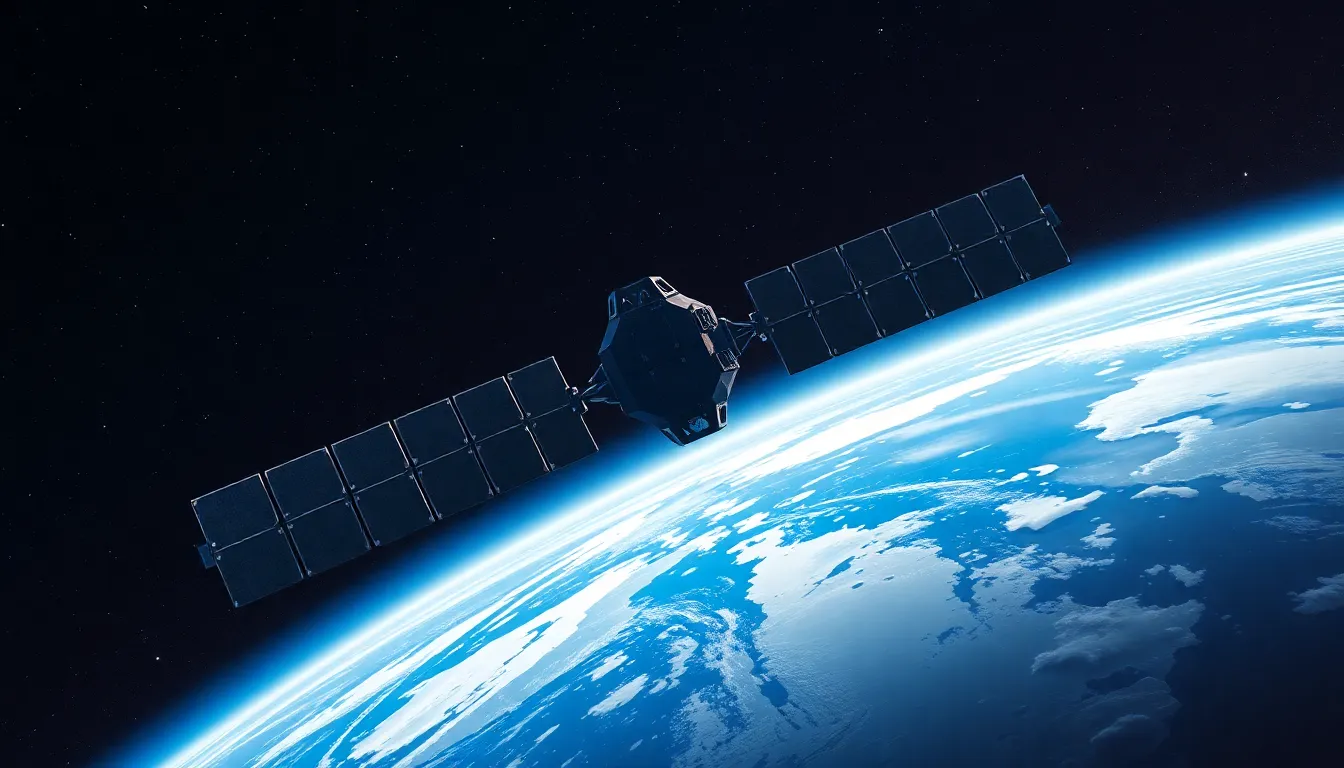Space technology isn’t just about launching rockets and waving goodbye to gravity. It’s the magic behind everything from your GPS to the latest smartphone. Imagine your favorite sci-fi movie coming to life—well, it’s happening right now, and you might not even realize it.
Table of Contents
ToggleOverview Of Space Technology Examples
Space technology encompasses various advancements that significantly impact daily life. Satellites, for example, facilitate global communications and provide data for weather forecasting. Spacecraft enable exploration beyond Earth, such as missions to Mars and beyond.
Another vital component includes the use of space technology in remote sensing. Imaging satellites capture detailed images of Earth’s surface, assisting in agriculture, urban planning, and disaster management. Scientists utilize this data to monitor environmental changes, track deforestation, and assess natural disasters.
Launch vehicles represent another essential aspect of space technology. These powerful rockets transport satellites and cargo into orbit. Notably, reusable rockets, like those developed by SpaceX, have dramatically reduced launch costs and increased accessibility to space.
International cooperation showcases the collaborative nature of space exploration. The International Space Station serves as a testament to global partnerships, fostering scientific research and promoting peace among nations. Astronauts conduct experiments on the ISS, contributing knowledge that influences life on Earth.
Robotic missions highlight advancements in automated exploration. Rovers like Curiosity and Perseverance explore planetary surfaces, gathering valuable data about geology and potential habitability. Their findings deepen understanding of planetary science and inform future human missions to Mars.
Lastly, space technology drives advancements in everyday products. Innovations originally developed for space, such as water purification systems and advanced materials, find applications in various industries. These technologies enhance life on Earth while showcasing the ongoing impact of space exploration.
Satellite Technology

Satellite technology plays a crucial role in modern life, affecting communication, weather forecasting, and environmental monitoring.
Communication Satellites
Communication satellites enable global connectivity by relaying signals for television, internet, and phone communications. These satellites, stationed in geostationary orbits, maintain a fixed position above the Earth, ensuring consistent coverage. Over 2,000 functioning satellites support billions of users worldwide. They help remote areas access services traditionally only available in urban settings, closing the digital divide. Additionally, advancements in this technology have improved data transmission speeds, benefitting industries like broadcasting and telecommunications.
Earth Observation Satellites
Earth observation satellites monitor the Earth’s surface and atmosphere, providing essential data for various applications. These satellites assist in climate research, disaster response, and agricultural management. Their high-resolution images allow scientists to track deforestation, urban development, and natural disasters in near real-time. Over 100 Earth observation satellites help governments and organizations make informed decisions regarding resource management. Programs like NASA’s Landsat provide decades of data, facilitating longitudinal studies on environmental changes and land use.
Space Exploration Technologies
Advancements in space exploration technologies continually reshape our understanding of the universe. Key innovations make significant contributions to both scientific discovery and practical applications.
Rovers and Landers
Rovers and landers represent crucial tools for planetary exploration. NASA’s Mars rovers, like Curiosity and Perseverance, analyze soil and rock samples while capturing high-resolution images. These rovers autonomously navigate rugged terrains, providing insights into Mars’ geological history. Landers, such as the Viking missions, drastically improved knowledge about the Martian environment. Equipped with advanced scientific instruments, they measure atmospheric conditions and analyze surface chemistry. Overall, these technologies enable scientists to gather data that enhance understanding of extraterrestrial life and planetary formation.
Space Probes
Space probes play an essential role in exploring distant celestial bodies. Voyager 1 and Voyager 2, launched in 1977, continue transmitting data about the outer planets and interstellar space. These probes carried out flybys of Jupiter, Saturn, Uranus, and Neptune, offering unprecedented images and insights. Newer probes, like the Parker Solar Probe, investigate the solar atmosphere, gathering information that impacts space weather forecasting. By sending detailed data back to Earth, these missions expand knowledge of the solar system.
Launch Vehicle Innovations
Launch vehicle innovations significantly influence space exploration and access. Reusable rockets and heavy-lift launchers stand out as prime examples of groundbreaking technology in this field.
Reusable Rockets
Reusable rockets revolutionize the economics of space travel. SpaceX leads the charge with its Falcon 9 rocket, demonstrating rapid turnaround capabilities. Each Falcon 9 rocket can be launched multiple times, drastically reducing costs by up to 90%. This innovation not only lowers the barrier for satellite launches but also enhances the feasibility of human exploration beyond Earth. Other companies like Blue Origin are developing reusable technologies, including the New Shepard rocket, which focuses on suborbital tourism. Overall, reusable rockets reshape how organizations approach space missions.
Heavy-Lift Launchers
Heavy-lift launchers enable the transport of substantial payloads into orbit. The Space Launch System, developed by NASA, exemplifies this capability, designed to carry payloads over 100 tons. This system supports missions to the Moon and Mars, making significant strides in interplanetary exploration. Additionally, the Ariane 5, used by Arianespace, successfully places satellites into geostationary orbit and conducts European Space Agency missions. These heavy-lift vehicles enhance global competitiveness in space endeavors, bolstering international collaboration.
Advancements In Space Habitats
Advancements in space habitats enhance human life in low Earth orbit and beyond. These innovations focus on sustainability and long-term habitation.
Space Stations
Space stations serve as vital platforms for scientific research and international collaboration. The International Space Station, or ISS, includes modules for living and working, accommodating crews for up to six months. Astronauts conduct experiments in microgravity that lead to breakthroughs in medicine, materials science, and technology. The ISS represents over 20 years of partnership among multiple nations, showcasing the power of cooperation in advancing space science. Future space stations aim for increased capacity and improved technologies, such as advanced environmental systems and autonomous operations, paving the way for further exploration.
Lunar Bases
Lunar bases hold promise for further human exploration of the Moon and beyond. Establishing habitats on the lunar surface aims to support sustained human presence. NASA’s Artemis program envisions building the Lunar Gateway, a space station orbiting the Moon, facilitating missions to lunar landings. These bases will utilize local resources, such as lunar ice, for water and fuel production. Innovative structures will incorporate enhanced radiation protection and life-support systems, ensuring the safety and comfort of astronauts during extended missions. Such advancements set the stage for eventual crewed missions to Mars and beyond, showcasing the growing capabilities in space habitats.
Space technology is reshaping the world in ways that often go unnoticed. From enhancing communication to transforming agricultural practices, its influence permeates daily life. Innovations like reusable rockets and advanced satellites are not just feats of engineering; they’re paving the way for a future where space exploration becomes more accessible and impactful.
As humanity stands on the brink of further discoveries, the ongoing advancements in space technology promise to unlock new possibilities. Whether through international cooperation on platforms like the ISS or groundbreaking missions to Mars, these developments will continue to enrich both scientific knowledge and practical applications. The journey into space is just beginning, and its potential is limitless.



